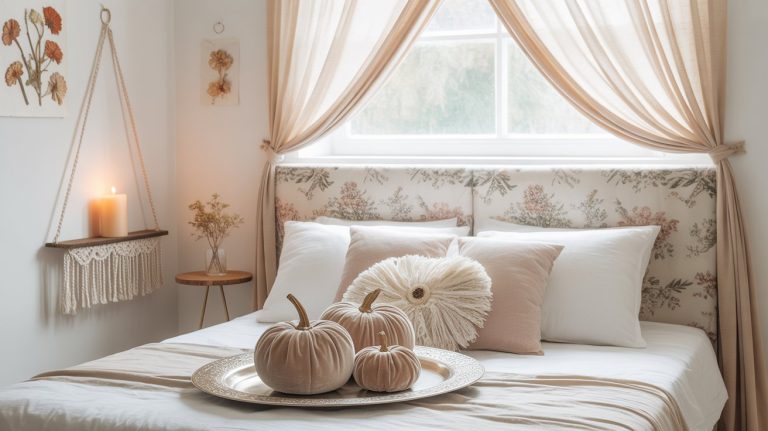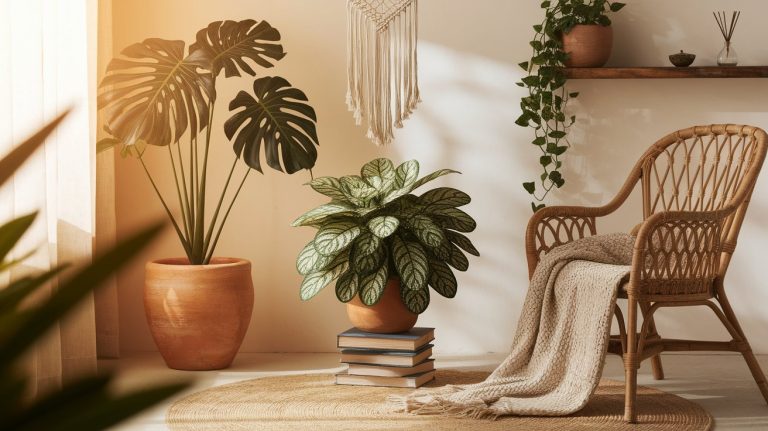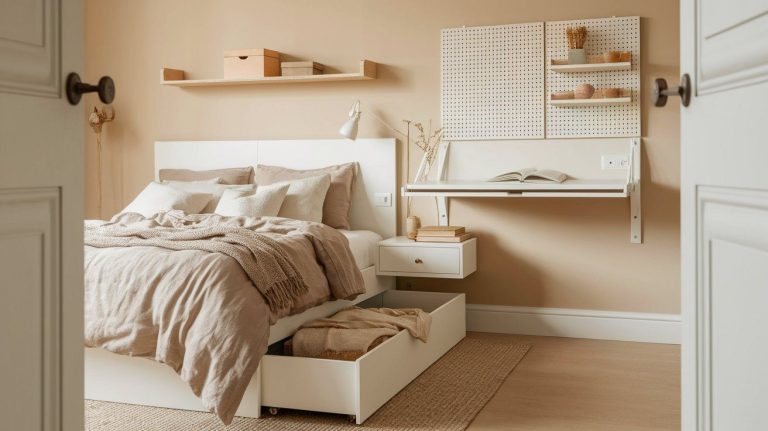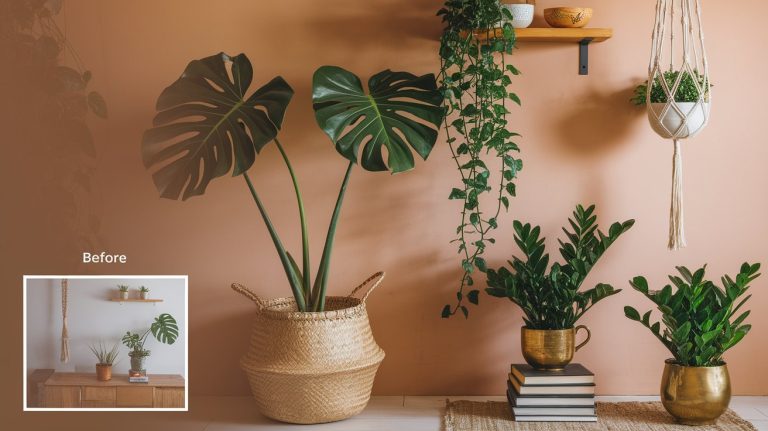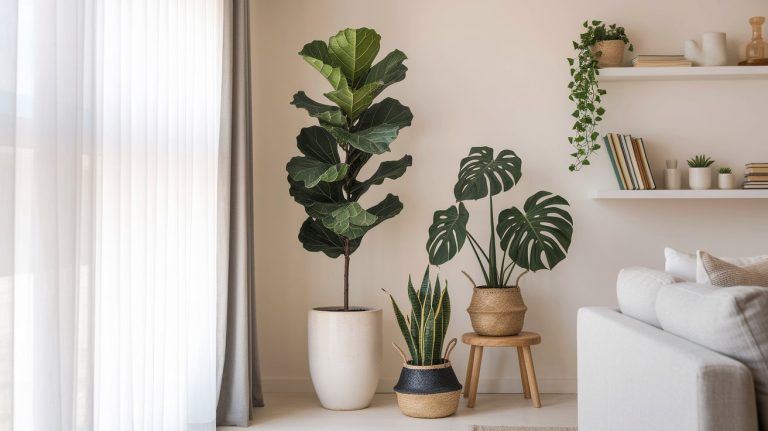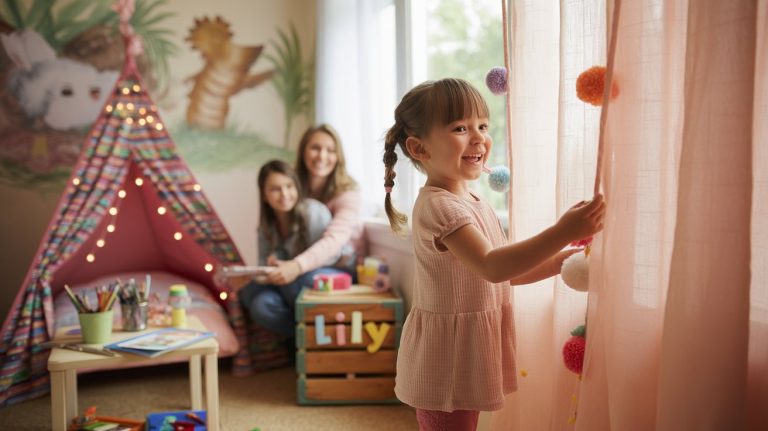Why Every Minimalist Is Obsessed with These Plant Styling Hacks
Minimalism isn’t about empty rooms, it’s about meaningful choices.
And for today’s modern minimalist, one of the most powerful decor decisions you can make is to bring in plants. Not just for their beauty, but for the calm they create.
In this guide, we’re breaking down the exact plant styling hacks that minimalists swear by, smart, subtle moves that keep your space light, balanced, and deeply serene.
1. Choose One Hero Plant Per Room
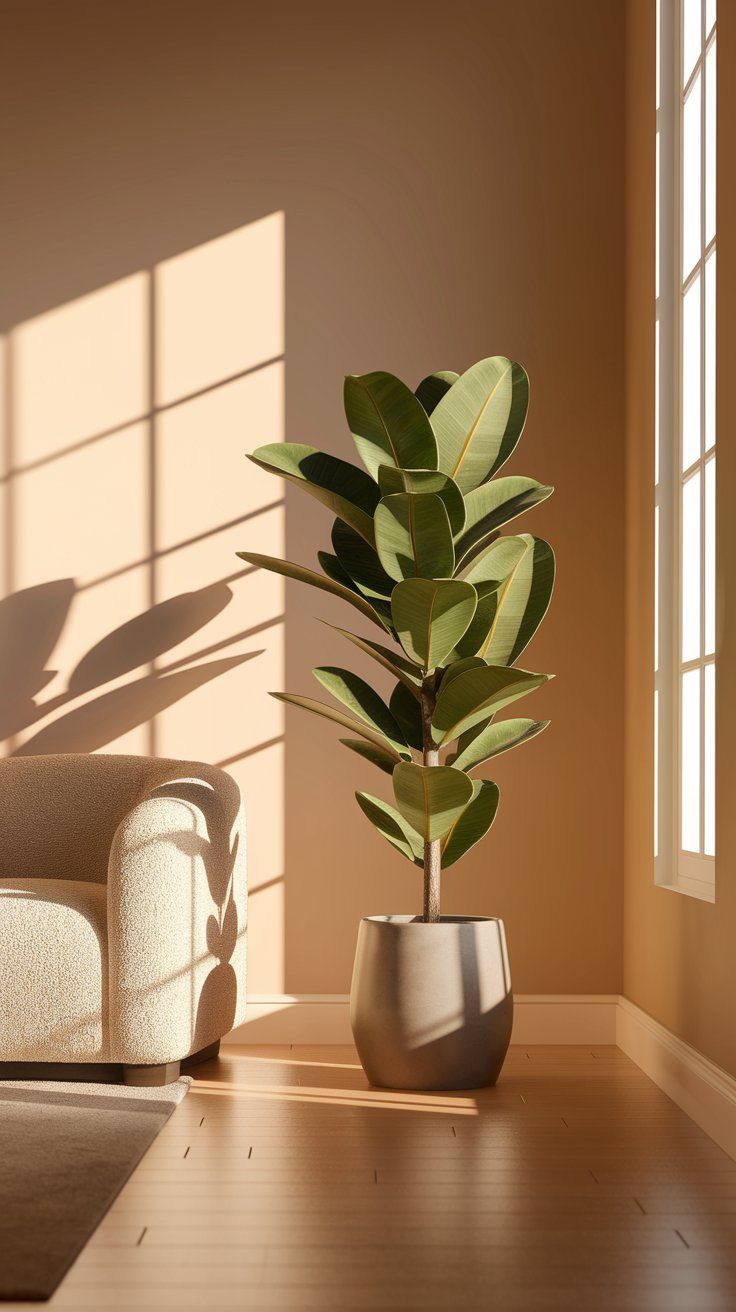
Let one strong silhouette set the tone.
Minimalists don’t decorate with abundance, they decorate with intention. Instead of scattering small plants across every corner, choose one standout green feature to anchor the space. It creates a focal point and lets the plant shine as part of the overall design.
Why it works:
- Keeps visual clutter low while still adding organic warmth
- Gives the room a sculptural, gallery-like quality
- Encourages thoughtful placement and flow rather than visual noise
What to look for in a hero plant:
- Height and shape: Tall plants like a Fiddle Leaf Fig, Bird of Paradise, or Kentia Palm command attention without adding bulk
- Strong silhouettes: Upright plants with clean lines, like a Snake Plant or Dracaena, offer architectural presence
- Low maintenance: Stick to something easy to care for so it always looks its best (ZZ Plant is great too)
Styling hack: Give your hero plant the spotlight by placing it near a blank wall, beside a reading chair, or at the end of a hallway. Use a neutral pot to keep attention on the foliage, and avoid crowding it with decor. Let it breathe.
> Think of it as the room’s quiet centerpiece, bold, grounded, and effortlessly stylish.
2. Use Matching Pots in Natural Textures
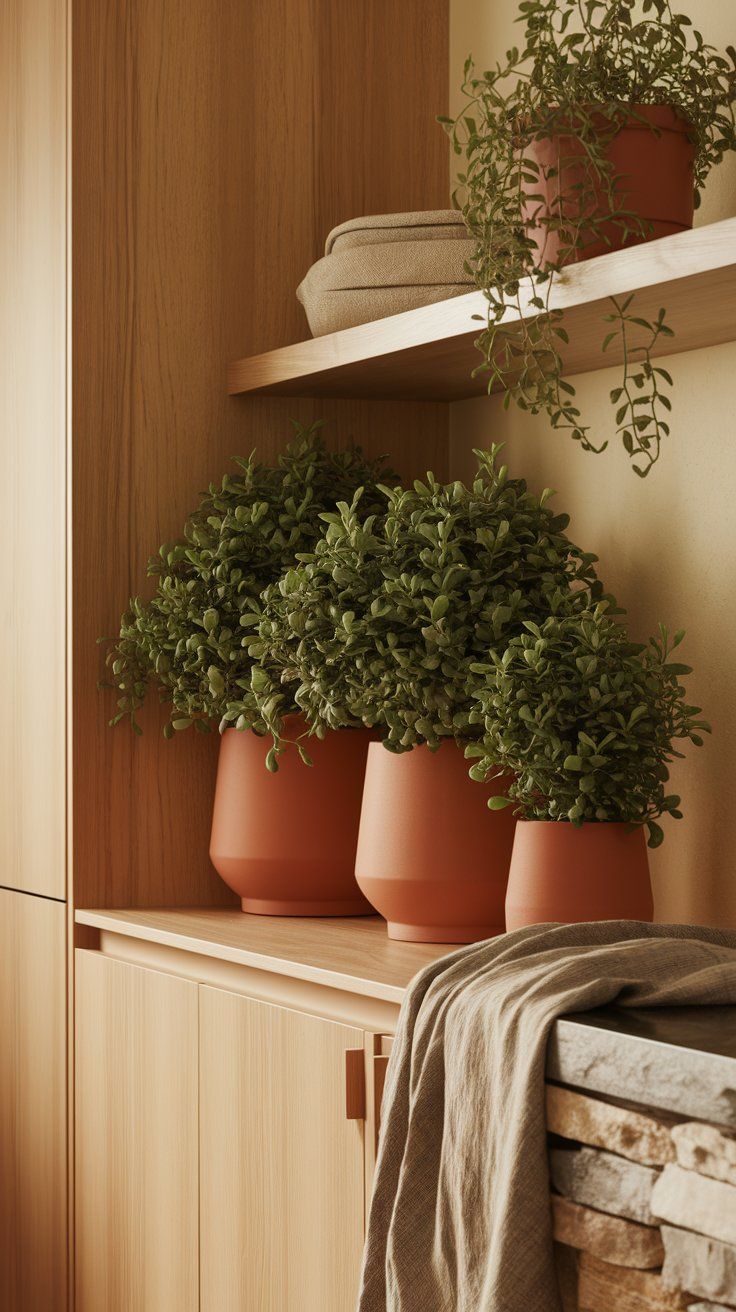
Let your containers bring quiet cohesion.
In minimalist design, the beauty is in the restraint. That applies not just to your furniture and layout, but to your planters too. Using matching pots (or a tight color/material palette) helps your space feel harmonious without feeling sterile.
Why minimalists love this approach:
- It creates visual consistency, even with different plant types
- Natural textures like clay or stone bring warmth to otherwise cool-toned rooms
- Limiting variety in containers allows the plants to become the true focal point
Best materials for a clean, understated look:
- Matte white ceramic for a crisp, modern finish
- Terracotta or clay for soft, sun-baked earthiness
- Concrete or cement for weight and sculptural simplicity
- Woven seagrass or bamboo baskets for texture with a natural edge
Styling ideas:
- Use three pots of the same shape and color in different sizes to create a tiered effect
- Keep everything in the same material but shift the finish (e.g. rough vs. smooth clay)
- Place matching planters along a bench, shelf, or windowsill for clean visual rhythm
Bonus hack: If you already have mismatched pots, try wrapping them with linen fabric, neutral kraft paper, or placing them inside matching outer baskets to instantly streamline the look.
3. Limit Color, Let Leaves Lead
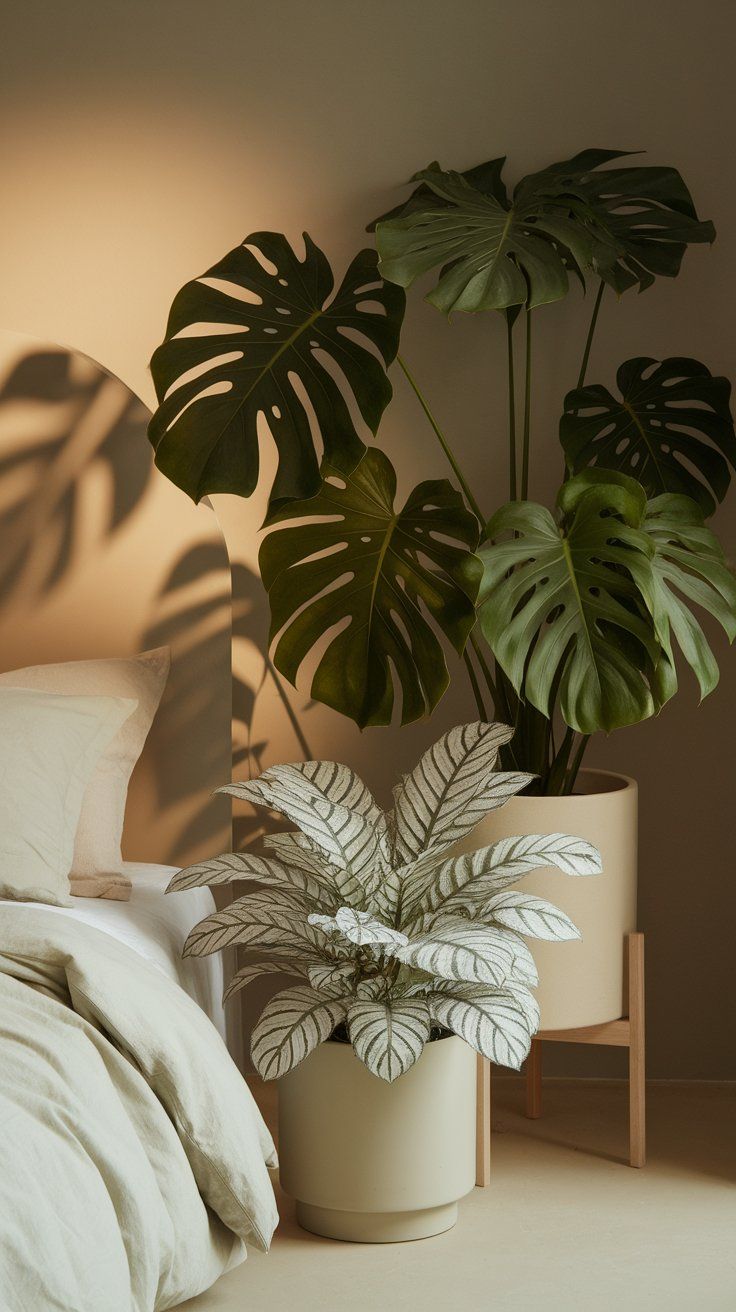
Let your plants be the only pop you need.
Minimalist spaces thrive on calm. That means keeping your color palette tight and muted, allowing natural textures and greenery to take center stage. When you reduce competing hues, even the smallest plant makes a statement.
Why this matters:
- Green becomes a visual anchor when it’s the only vibrant color
- A restricted color scheme prevents visual noise and creates a clean, peaceful vibe
- It helps highlight the form of the plant, leaf shape, height, movement, rather than getting distracted by colorful containers or decor
The minimalist color trio:
- Green: From your plants, variegated or solid, big or small
- Neutrals: Whites, creams, beiges for background and containers
- Grounding tones: Soft black, natural wood, or sand for structure
Styling tips:
- Use all-white planters to let the green pop, especially against light-toned walls
- Avoid planters with patterns, logos, or saturated colors
- Group a few green plants together, but make sure their leaves don’t compete, contrast a bold Monstera with a slender Snake Plant or a delicate fern
> When in doubt, remove one item. Minimalist styling is less about adding the right thing, and more about letting the right things breathe.
4. Group Plants in Threes, But Keep Breathing Room
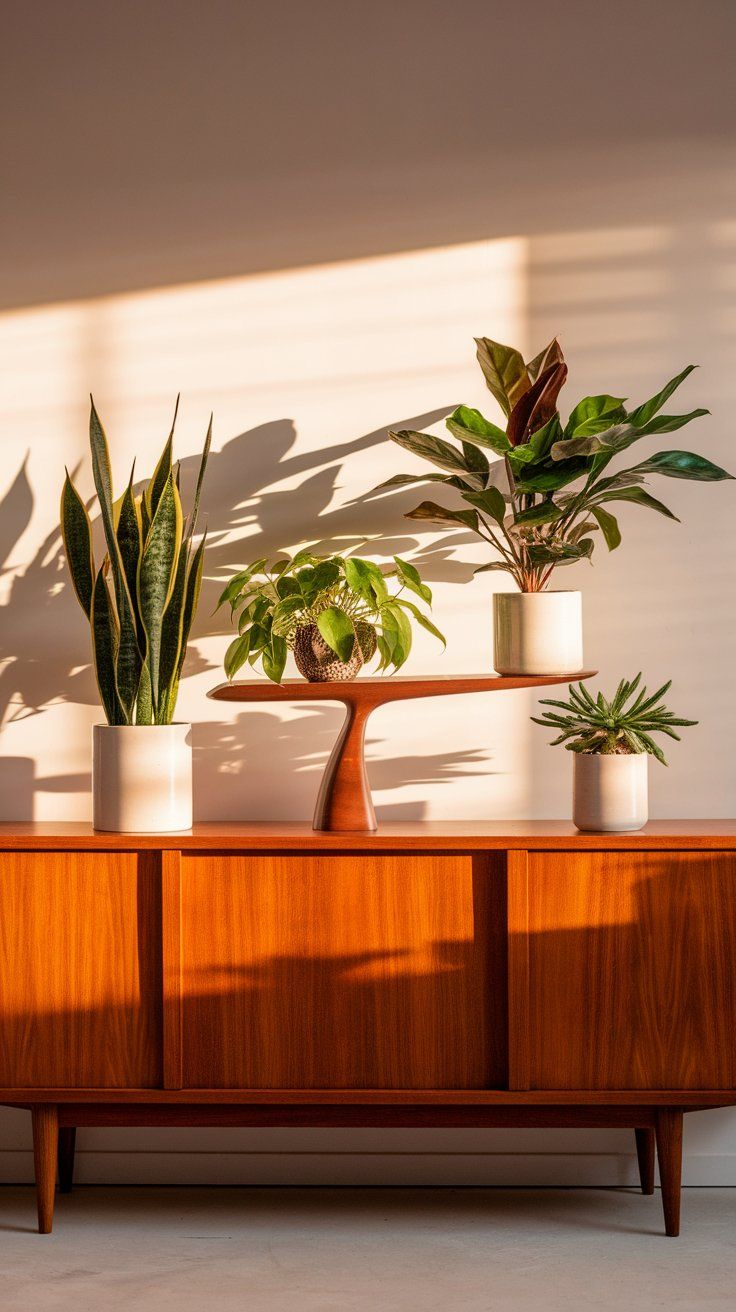
Cluster with intention, not clutter.
In minimalist styling, odd numbers create more visual interest than pairs. A trio of well-chosen plants can bring balance, height variation, and depth, without overwhelming the space. The trick is knowing when to stop and how to space them out.
Why this works:
- Groupings of three feel organic and balanced to the eye
- Varying heights in a trio keeps things visually dynamic
- Leaving space between plants avoids a cluttered, overgrown look
How to style it:
- Choose three plants with distinct shapes: one tall and upright (like a ZZ Plant), one medium and bushy (like a Peperomia), and one trailing (like a Pothos)
- Keep the containers in the same material or color family for cohesion
- Stagger their heights using a riser, stack of books, or a plant stand
Where to use this hack:
- On a sideboard or media console
- At one end of a windowsill or bench
- In the corner of a kitchen counter
Minimalism isn’t about less stuff, it’s about better spacing. Let your trio breathe, and it’ll feel like an intentional design moment, not a crowd of leaves fighting for attention.
5. Float Your Plants

Use vertical space to create lightness and flow.
Minimalism favors open surfaces and clear floors, but that doesn’t mean you need to sacrifice greenery. Floating your plants (on walls, shelves, or ceiling mounts) lets you bring life into a room without breaking its clean lines or visual simplicity.
Why this hack is a minimalist favorite:
- Keeps floor and counter space clear, ideal for small or airy interiors
- Adds height and visual rhythm to blank walls
- Emphasizes greenery without adding “stuff”
Ways to float your plants without clutter:
- Floating shelves: Place small trailing plants like String of Pearls or Pothos beside a book or framed art piece
- Wall-mounted planters: Choose matte ceramics or natural wood finishes that blend with your decor
- Macramé hangers: A single hanging plant near a window can add movement and softness
- Window grids or suction-mounted shelves: Especially beautiful in kitchens or sunrooms with limited surface space
Styling tip: Stick to one or two floating greenery moments per room to keep things quiet. Let the negative space around them do the talking.
Plants don’t always have to sit, they can hover, spill, and sway, bringing calm movement to even the stillest corners.
6. Add Height Without Adding Bulk
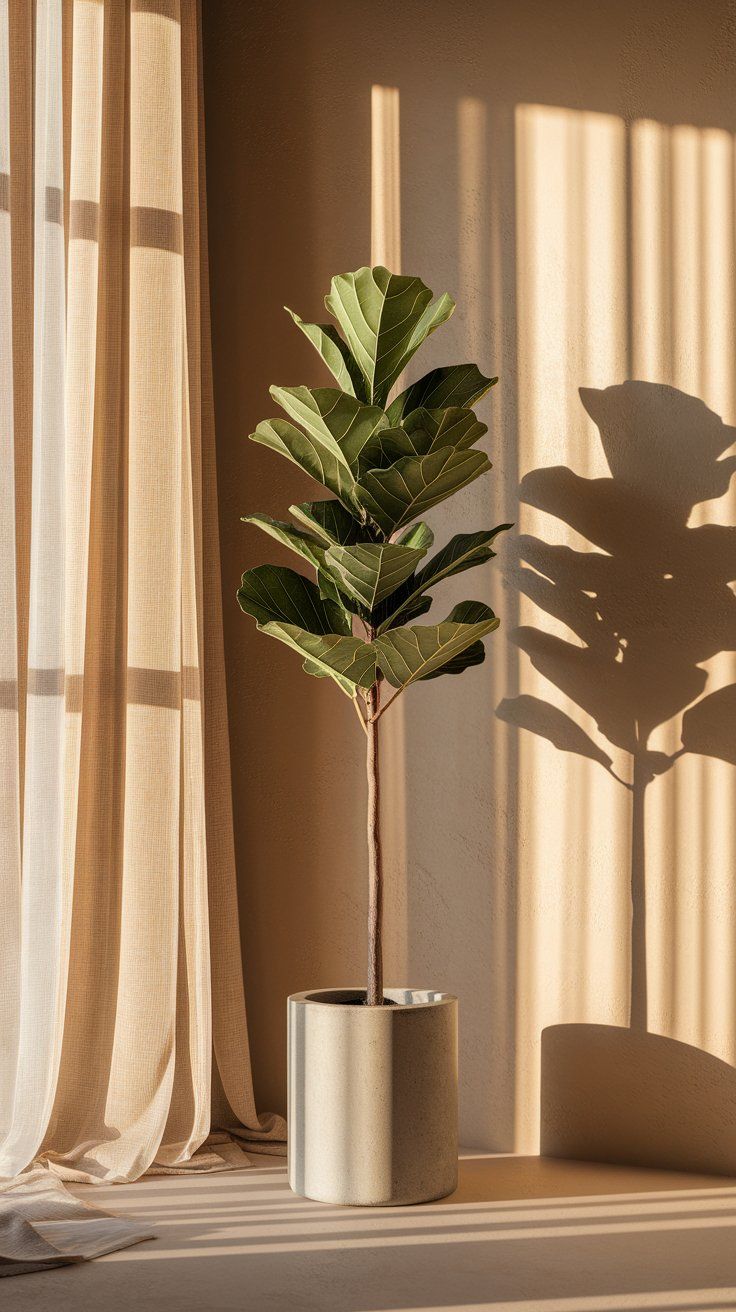
Go vertical for presence, not clutter.
Minimalist rooms often feel grounded and wide open, which is calming, but it can leave a space feeling a little flat. Adding vertical elements, like tall plants or slim stands, draws the eye upward and brings dimension without visually filling the room.
Why this strategy works in minimalist spaces:
- It balances the horizontal flow with vertical interest
- Keeps floor footprint small, making the room feel spacious
- Accentuates negative space by framing rather than crowding it
Smart ways to add minimalist height:
- Tall plants with slim silhouettes: Think Snake Plant, Bamboo Palm, or Corn Plant in narrow pots
- Minimalist plant stands: Choose matte black, blonde wood, or thin metal frames that feel light
- Stacked height: Use a low bench or side table to elevate a medium-sized plant closer to eye level
- Corner styling: Place tall plants in empty corners to guide the eye up and soften hard edges
Design tip: Let tall plants stand alone or pair them with one very low accent nearby. The space around them gives them room to breathe, and power to impress.
In minimalist design, it’s not just what you add, it’s what you emphasize. Height can shift a room’s whole feeling with just one slim move.
7. Repeat Shapes, Not Chaos
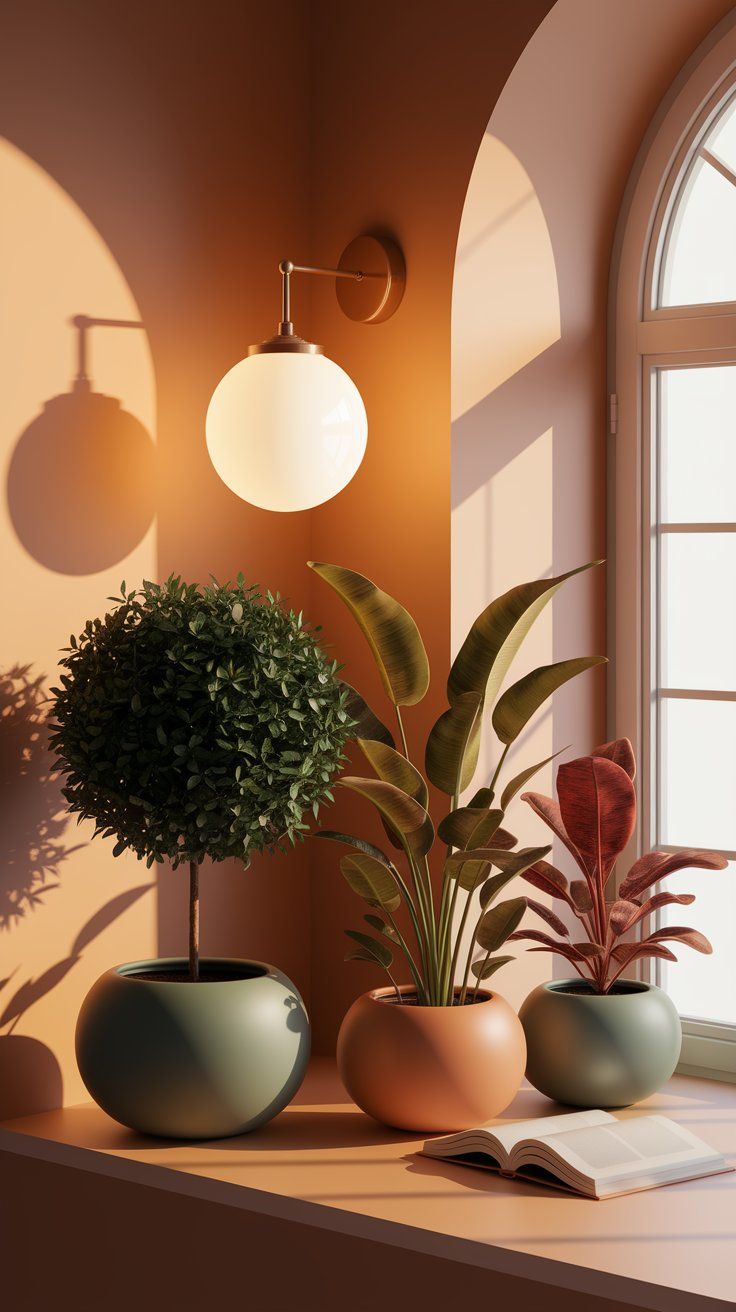
Calm comes from consistency.
Minimalist spaces rely on rhythm, the quiet repetition of forms that brings a sense of flow. When it comes to plants, repeating similar shapes across your room helps tie everything together without visual overwhelm. It’s not about having identical plants, but about choosing foliage that echoes or complements one another.
Why this matters:
- Repeated leaf shapes create subconscious harmony and structure
- Similar forms feel calmer than a room with wild botanical variety
- It keeps your plant curation looking curated, not chaotic
What to repeat:
- Tall verticals: Like Snake Plants, ZZ Plants, or Dracaena, use them at opposite ends of a room to frame the space
- Round leaves: Like Pilea, Rubber Plants, or Peperomia for softness and cohesion
- Trailing vines: Pick one type (e.g. Pothos) and echo it on a shelf, desk, and wardrobe top
Styling tip: Limit your leaf shapes to two or three dominant profiles per room. If you’re using a Monstera with split leaves, pair it with upright, clean-line plants like Sansevieria for contrast, but don’t add a dozen other varieties that break the visual rhythm.
> Repeating patterns isn’t boring, it’s grounding. In a minimalist space, the echo of similar shapes feels like calm you can see.
Conclusion
Minimalism isn’t about having fewer things, it’s about choosing better ones. Each of these plant styling hacks offers a way to add beauty without noise, presence without clutter. Whether you float one trailing vine or ground your space with a sculptural hero plant, the goal is the same: to create a room that breathes, restores, and reflects your values.
When greenery is styled with intention, it doesn’t just decorate, it elevates. So keep it simple, keep it clean, and let nature do what it does best: bring life, quietly and powerfully, into every space it touches.
Related Articles:

